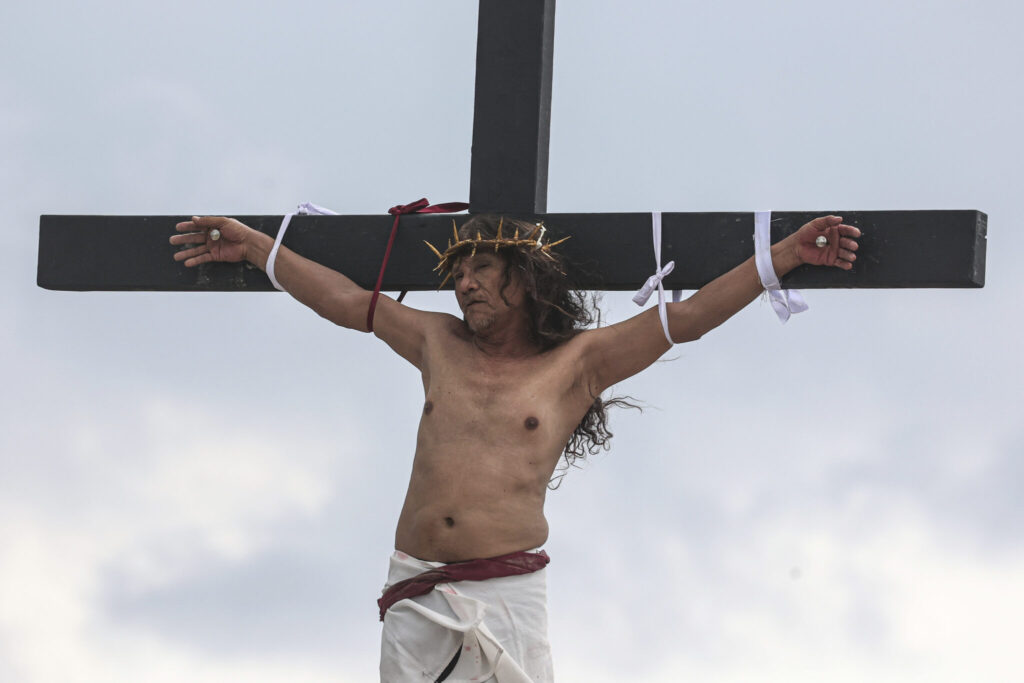A Filipino villager has been nailed to a wooden cross for the 35th time to reenact Jesus Christ’s suffering in a brutal Good Friday tradition he said he would devote to pray for peace in Ukraine, Gaza and the disputed South China Sea. On Friday, over a hundred people watched on as 10 devotees were nailed to wooden crosses, among them Ruben Enaje, a 63-year-old carpenter and sign painter. The real-life crucifixions have become an annual religious spectacle that draws tourists in three rural communities in Pampanga province, north of Manila.
Quick Read
- Good Friday Tradition: A Filipino villager underwent crucifixion for the 35th time in a Good Friday reenactment of Jesus Christ’s suffering, dedicating his act to pray for peace in Ukraine, Gaza, and the South China Sea.
- Event Attendance: Over a hundred spectators witnessed 10 devotees, including 63-year-old carpenter Ruben Enaje, being nailed to wooden crosses in Pampanga province, north of Manila, a tradition that attracts tourists.
- Ritual Resumption: After a hiatus due to the pandemic, the annual event resumed, featuring Enaje in his role as “Christ,” drawing attention and becoming a local celebrity.
- Motivation for Participation: Despite considering ending his participation due to age, Enaje was compelled by community requests for prayers addressing various hardships and global conflicts.
- Global Concerns: Enaje highlighted the impact of wars in Ukraine and Gaza on global commodity prices and expressed worries about the territorial dispute in the South China Sea between China and the Philippines.
- Personal Background: Enaje began his annual crucifixion as a form of thanksgiving after surviving a fall, and continued due to subsequent personal miracles and job opportunities.
- Crucifixion Process: Participants, including Enaje, donned thorny crowns and carried crosses under the summer sun before being nailed to them, a practice observed by a diverse audience, including international tourists.
- Penitence and Faith: Many participants engage in this extreme form of penitence to atone for sins, pray for health and prosperity, or express gratitude for perceived miracles.
- Cultural and Religious Context: The practice, blending Catholic tradition with local superstitions, is unique to the Philippines and has continued despite the Catholic Church’s preference for non-harmful expressions of faith.
The Associated Press has the story:
A Filipino villager is nailed to a cross for 35th time on Good Friday to pray for world peace
Newslooks- MANILA, Philippines (AP) —
A Filipino villager has been nailed to a wooden cross for the 35th time to reenact Jesus Christ’s suffering in a brutal Good Friday tradition he said he would devote to pray for peace in Ukraine, Gaza and the disputed South China Sea.
On Friday, over a hundred people watched on as 10 devotees were nailed to wooden crosses, among them Ruben Enaje, a 63-year-old carpenter and sign painter. The real-life crucifixions have become an annual religious spectacle that draws tourists in three rural communities in Pampanga province, north of Manila.
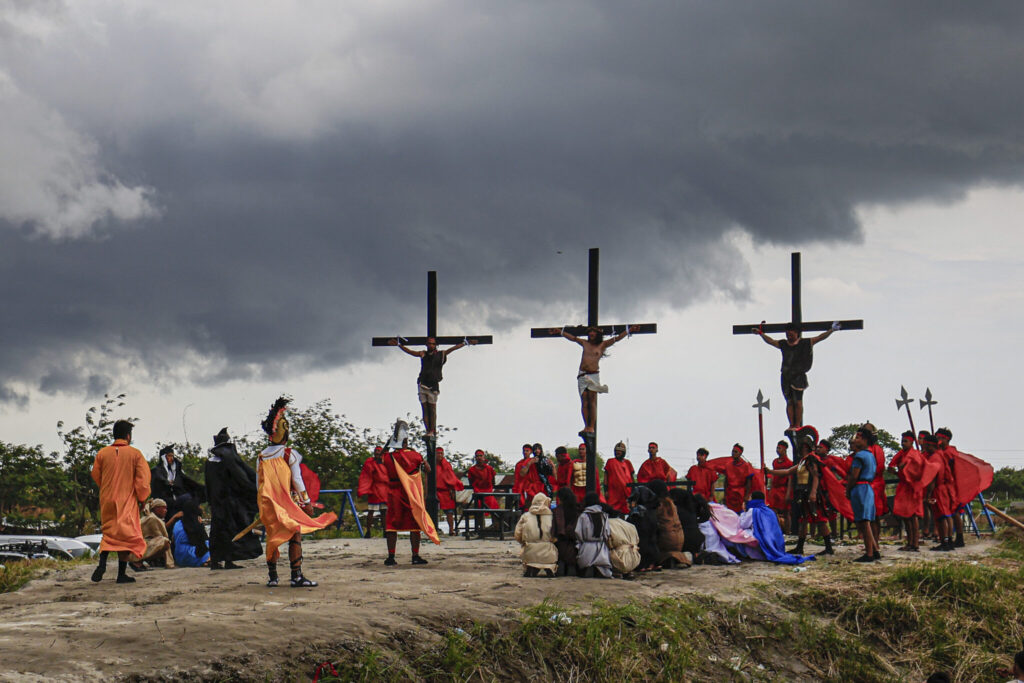
The gory ritual resumed last year after a three-year pause due to the coronavirus pandemic. It has turned Enaje into a village celebrity for his role as the “Christ” in the Lenten reenactment of the Way of the Cross.
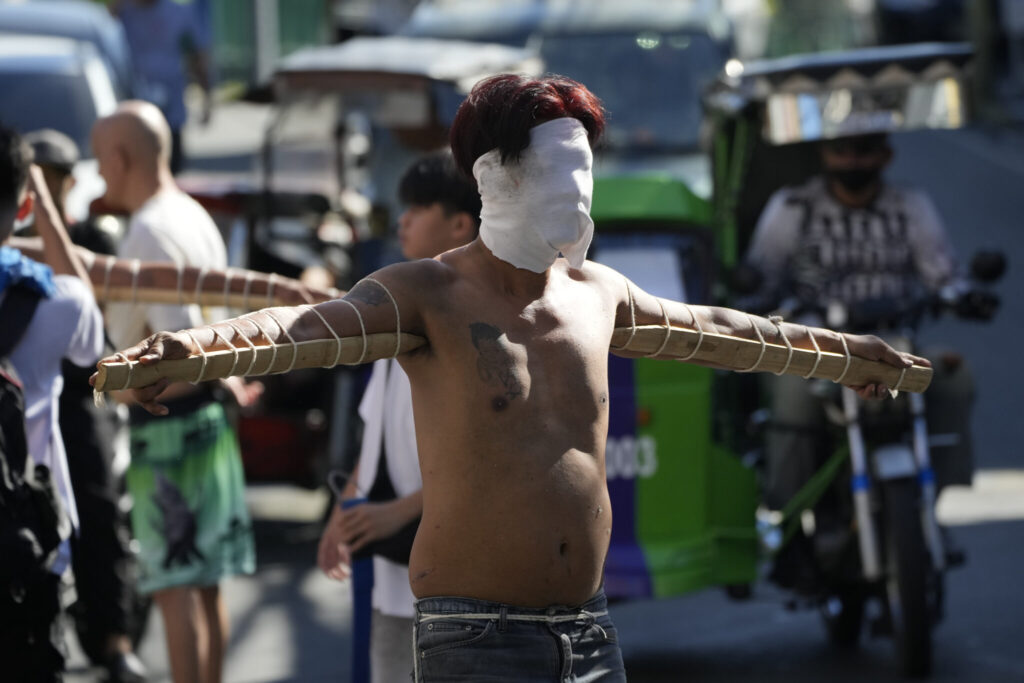
Ahead of the crucifixions, Enaje told The Associated Press by telephone Thursday night that he has considered ending his annual religious penitence due to his age, but said he could not turn down requests from villagers for him to pray for sick relatives and all other kinds of maladies.
The need for prayers has also deepened in an alarming period of wars and conflicts worldwide, he said.
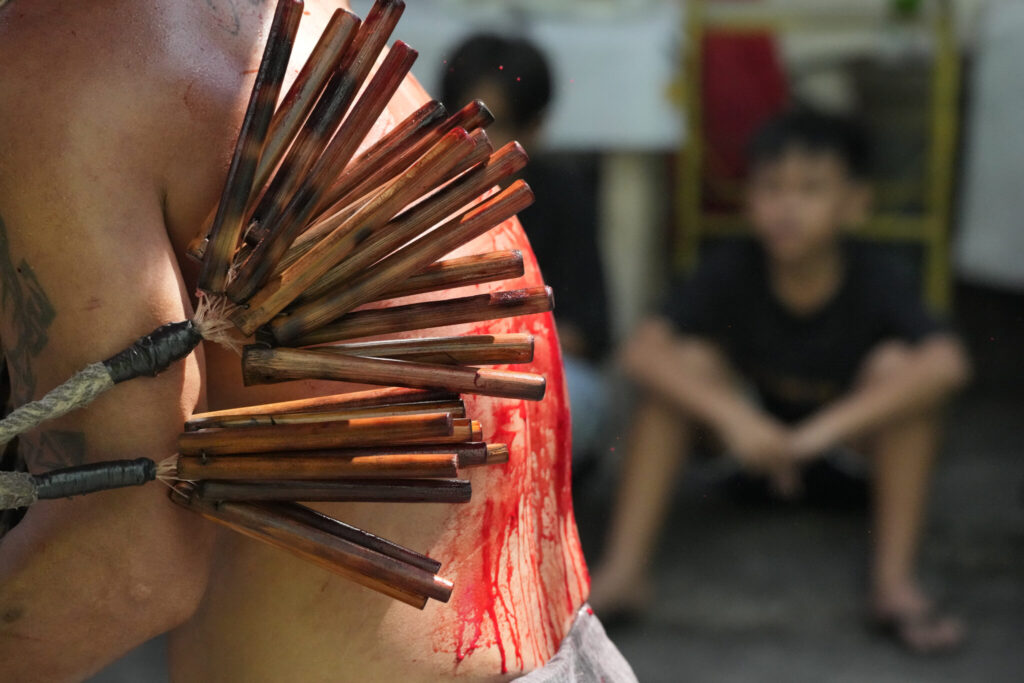
“If these wars worsen and spread, more people, especially the young and old, would be affected. These are innocent people who have totally nothing to do with these wars,” Enaje said.
Despite the distance, the wars in Ukraine and Gaza have helped send prices of oil, gas and food soaring elsewhere, including in the Philippines, making it harder for poor people to stretch their meagre income, he said.
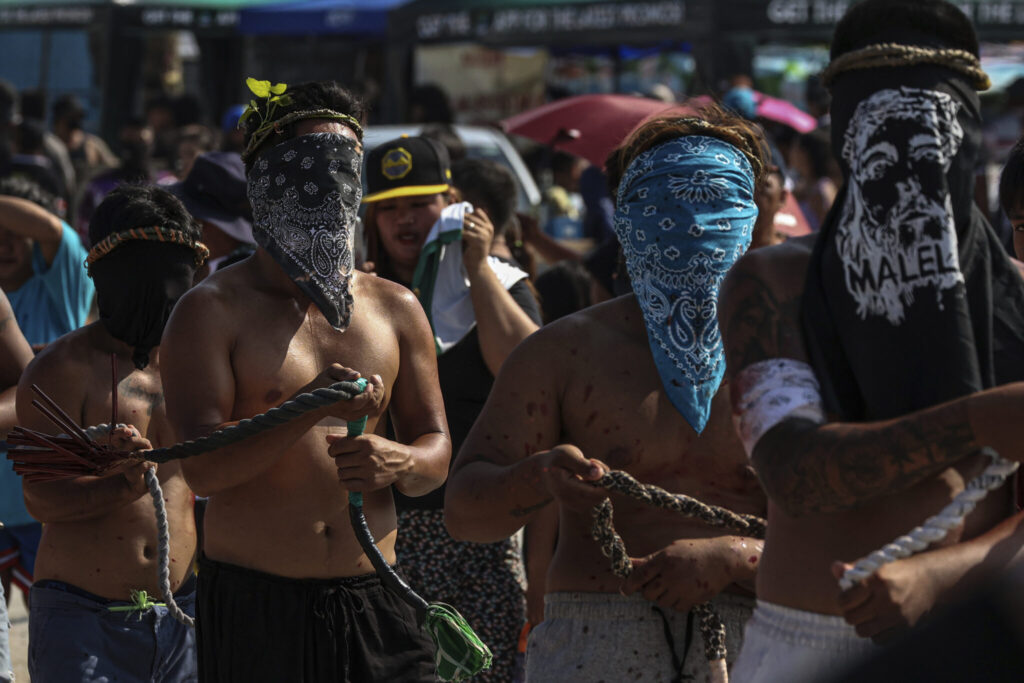
Closer to home, the escalating territorial dispute between China and the Philippines in the South China Sea has also sparked worries because it’s obviously a lopsided conflict, Enaje said. “China has many big ships. Can you imagine what they could do?” he asked.
“This is why I always pray for peace in the world,” he said and added he would also seek relief for people in southern Philippine provinces, which have been hit recently by flooding and earthquakes.
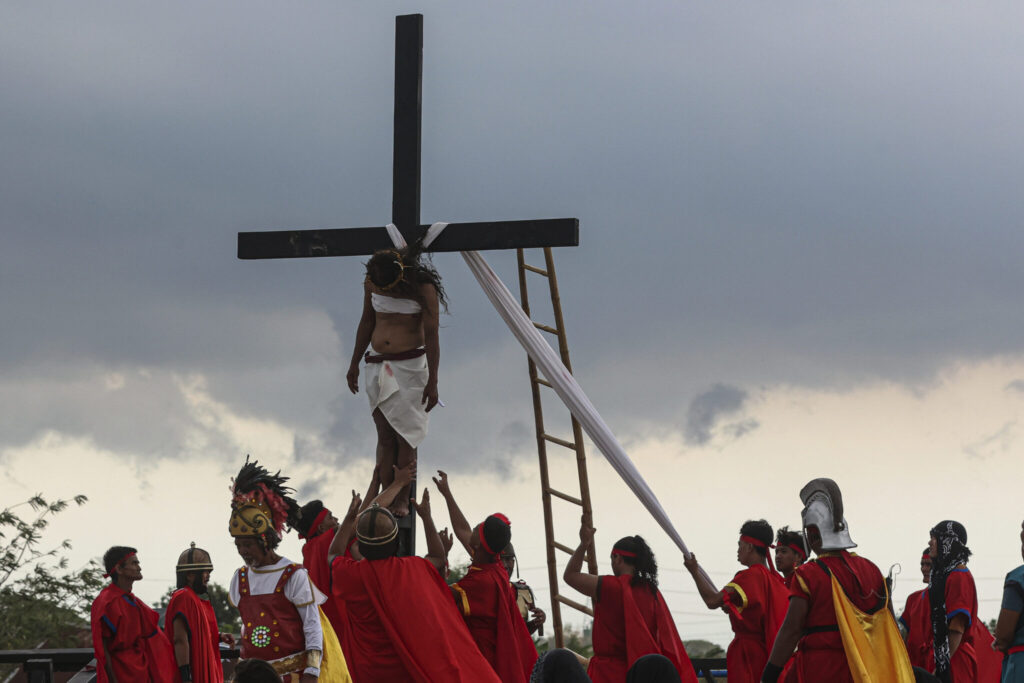
In the 1980s, Enaje survived nearly unscathed when he accidentally fell from a three-story building, prompting him to undergo the crucifixion as thanksgiving for what he considered a miracle. He extended the ritual after loved ones recovered from serious illnesses, one after another, and he landed more carpentry and sign-painting job contracts.
“Because my body is getting weaker, I can’t tell … if there will be a next one or if this is really the final time,” Enaje said.
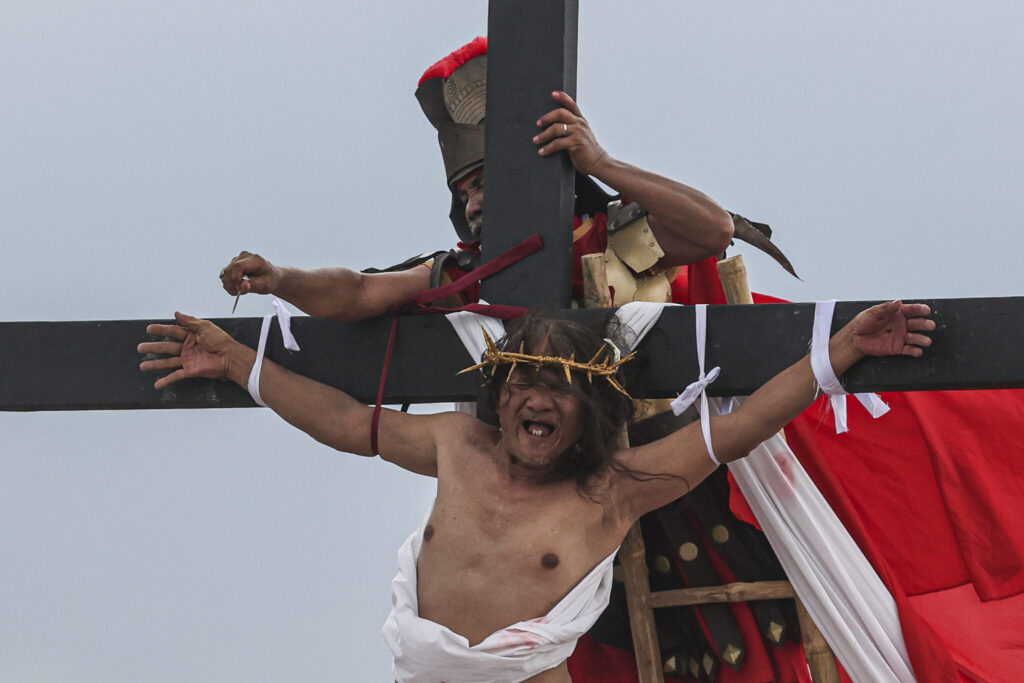
During the annual crucifixions on a dusty hill in Enaje’s village of San Pedro Cutud in Pampanga and two other nearby communities, he and other religious devotees, wearing thorny crowns of twigs, carried heavy wooden crosses on their backs for more than a kilometer (more than half a mile) under a hot summer sun. Village actors dressed as Roman centurions hammered 4-inch (10-centimeter) stainless steel nails through their palms and feet, then set them aloft on wooden crosses for about 10 minutes as dark clouds rolled in and a large crowd prayed and snapped pictures.
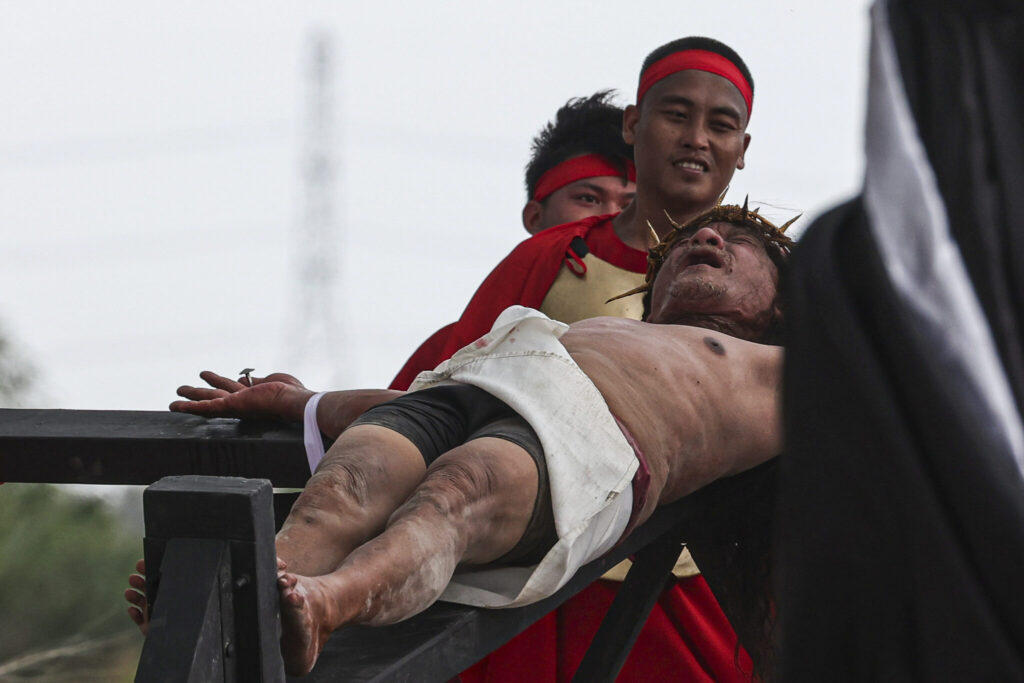
Among the crowd this year was Maciej Kruszewski, a tourist from Poland and a first-time audience member of the crucifixions.
“Here, we would like to just grasp what does it mean, Easter in completely different part of the world,” said Kruszewski.
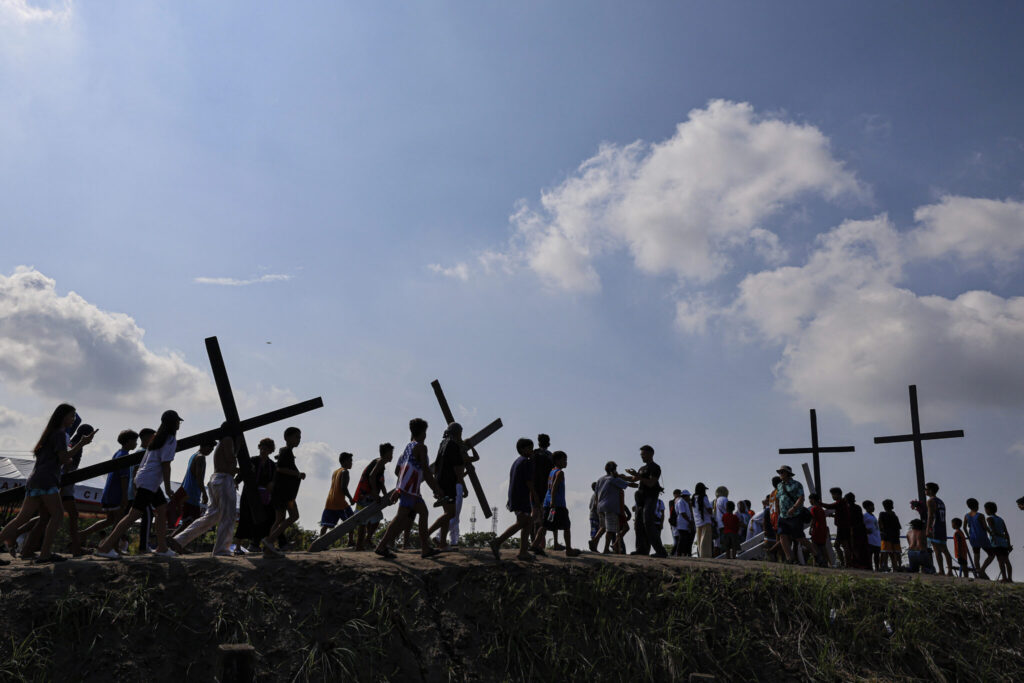
Other penitents walked barefoot through village streets and beat their bare backs with sharp bamboo sticks and pieces of wood. Some participants in the past opened cuts in the penitents’ backs using broken glass to ensure the ritual was sufficiently bloody.
Many of the mostly impoverished penitents undergo the ritual to atone for their sins, pray for the sick or for a better life, and give thanks for miracles.
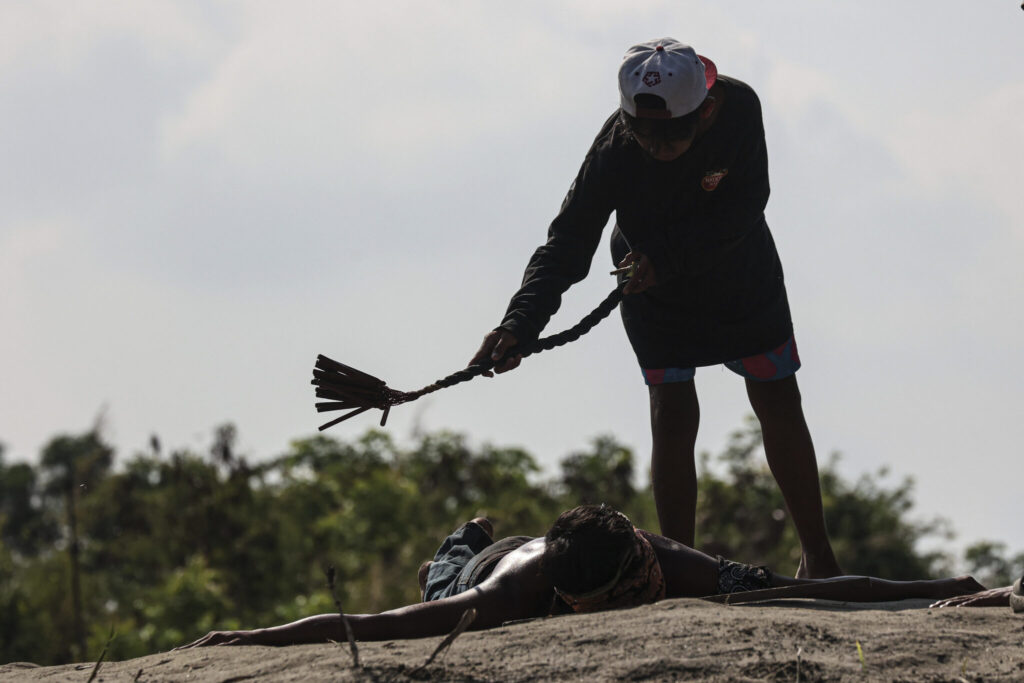
The gruesome spectacle reflects the Philippines’ unique brand of Catholicism, which merges church traditions with folk superstitions.
Church leaders in the Philippines, the largest Catholic nation in Asia, have frowned on the crucifixions and self-flagellations. Filipinos can show their faith and religious devotion, they say, without hurting themselves and by doing charity work instead, such as donating blood, but the tradition has lasted for decades.

